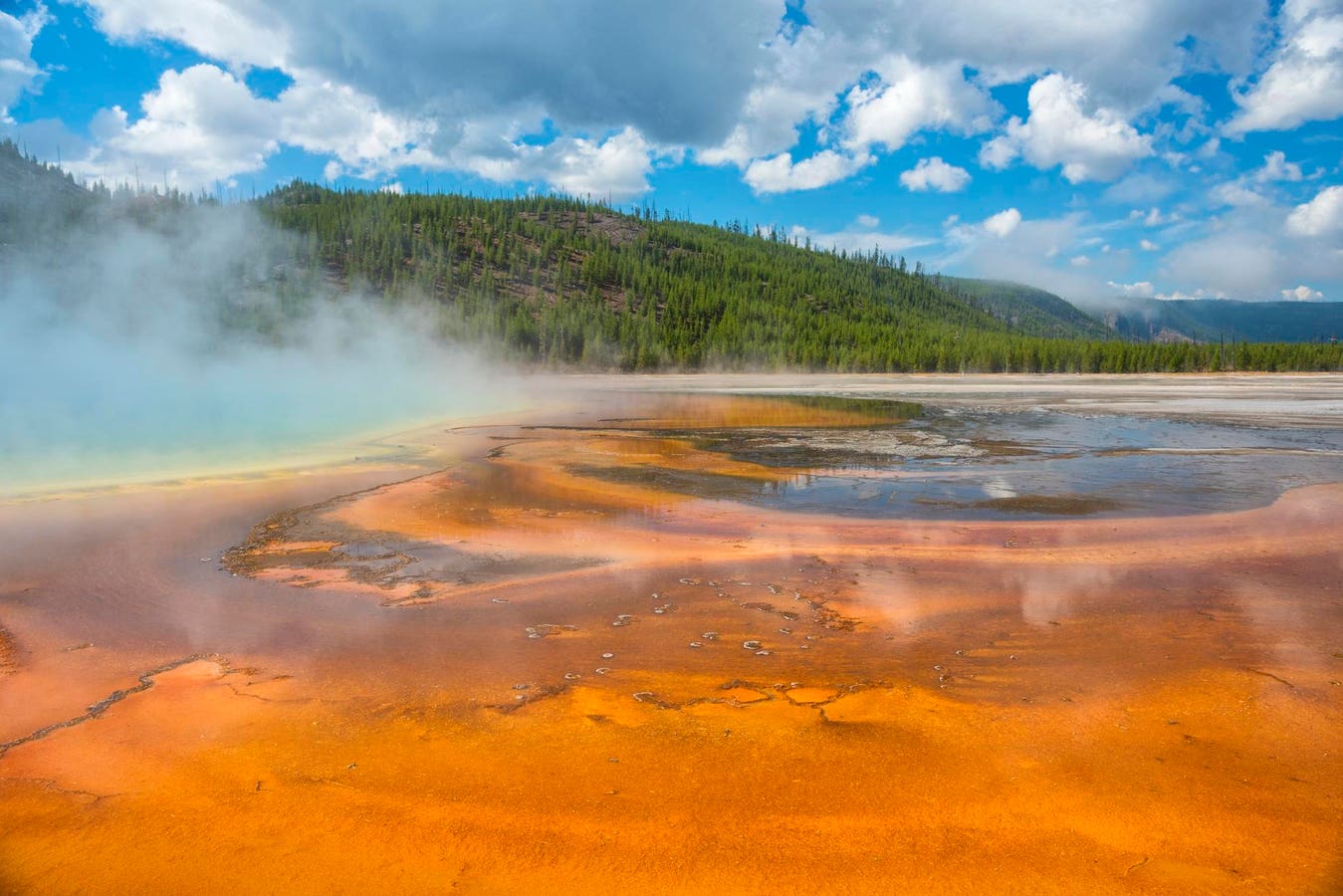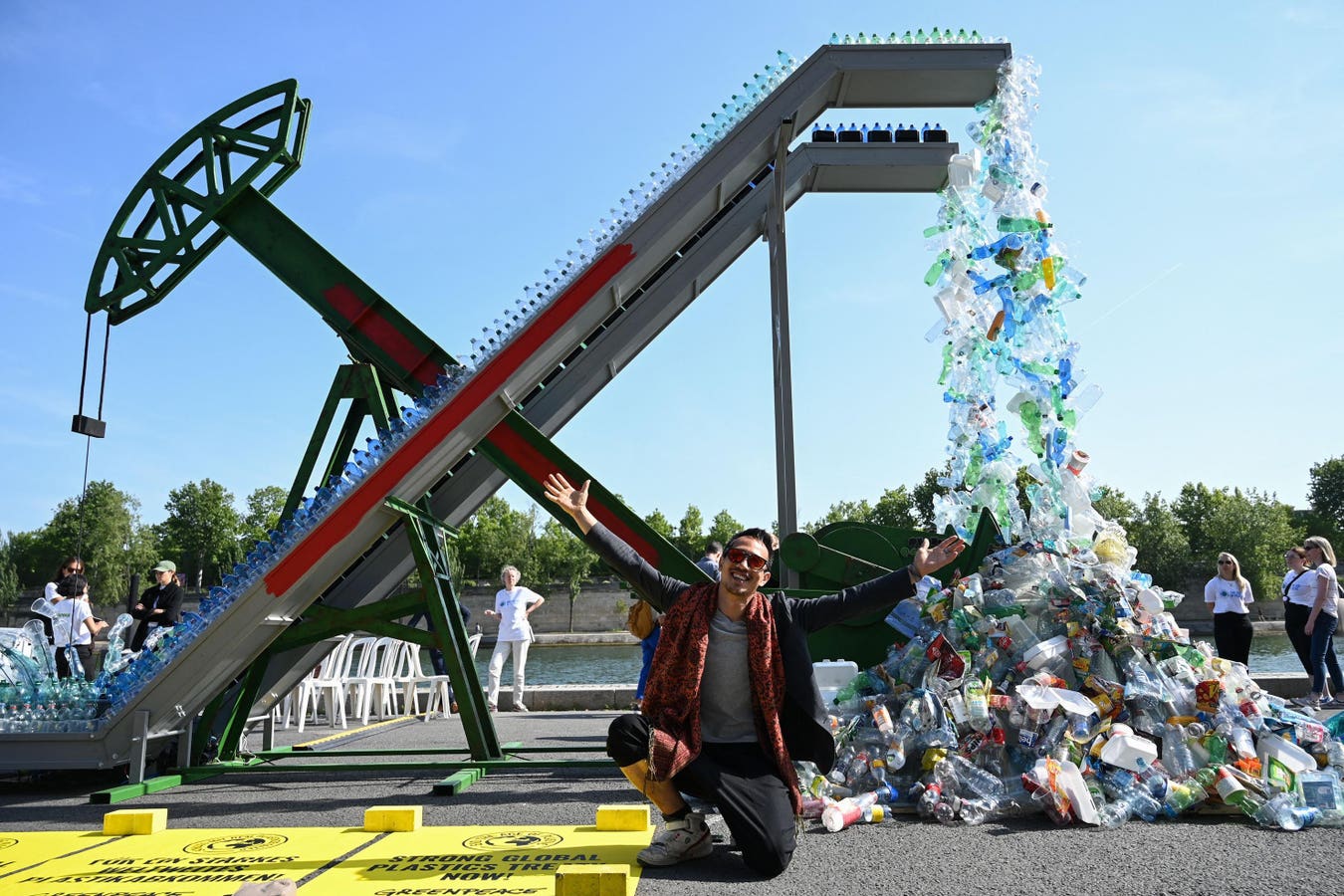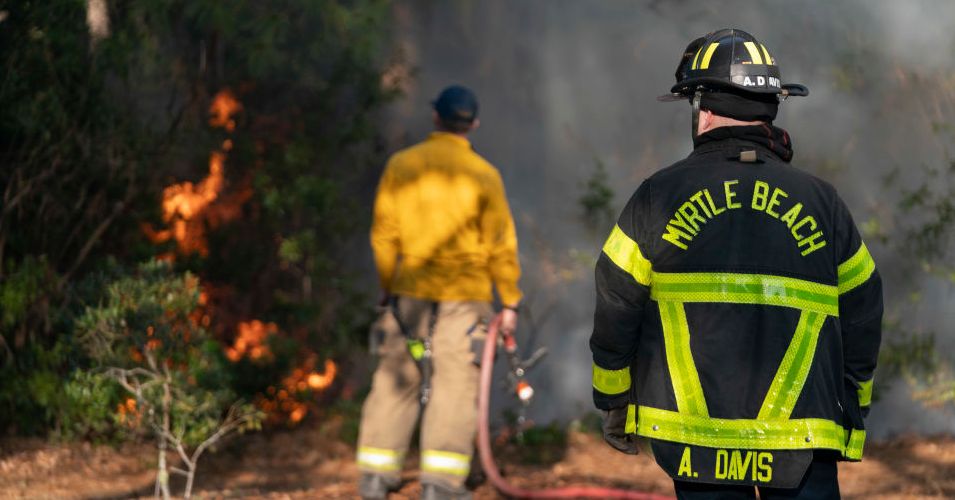Wyoming, Yellowstone, National Park, UNESCO, World Heritage, Grand Prismatic Spring. (Photo by … More
Using innovative seismic imaging and advanced models, a team of researchers from Rice University, University of New Mexico, University of Utah and the University of Texas at Dallas have mapped the magmatic system beneath the steaming geysers and bubbling mud pots of Yellowstone National Park. The research sheds new light on the movement of magma, gases and fluids, showing how a cap of partially molten rock acts like a “safety valve,” allowing gases to escape and lowering the risk of a volcanic eruption.
Yellowstone is one of the world’s largest and most closely watched volcanic systems, and despite clickbait titles of a super-eruption waiting to happen, volcanic activity shows no anomalous behavior.
Previous studies suggested the top of Yellowstone’s magma system could lie anywhere from 3 to 8 kilometers deep. Knowing the exact location of the underground magma reservoir allows geologists to predict how a volcano may behave in the future — and what might keep it from erupting.
“For decades, we’ve known there’s magma beneath Yellowstone, but the exact depth and structure of its upper boundary has been a big question,” says study coauthor Brandon Schmandt, professor of Earth, environmental and planetary sciences at Rice University.
The research team conducted a high-resolution seismic survey in the northeastern part of the park. A 53,000-pound vibroseis truck — typically used for oil and gas exploration — essentially generated tiny earthquakes to send seismic waves into the ground. Knowing the travel speed of the seismic waves and timing their arrival along an array of 600 seismometers, the researchers collected a vast quantity of data on Yellowstone’s underground. The raw data was then processed to reveal any reflection signals and to identify geological boundaries.
“The motivation behind my research is to advance structural seismic imaging beyond the limits of conventional travel-time methods,” explains study first author Chenglong Duan, a postdoctoral research associate at Rice University. “Using a wave-equation imaging technique I developed during my Ph.D. for irregular seismic data, we made one of the first super clear images of the top of the magma reservoir beneath Yellowstone caldera.”
The data shows an important reflective boundary at about 3.8 kilometers depth.
“Seeing such a strong reflector at that depth was a surprise,” so Schmandt. “It tells us that something physically distinct is happening there.”
To better understand what causes this signal, Duan and Schmandt modeled various rock, melt and volatile combinations and how they reflect seismic waves. The best match they determined is a mixture of partially molten rock and super-hot fluid bubbles (mostly water and liquefied gases).
Fluids, known also as volatile components of a magma, play an important role in driving a volcanic eruption. As magma rises and decompresses, water vapor and carbon dioxide degas from the melt, forming bubbles. In some cases, these bubbles can accumulate lowering the density of the melt and increasing buoyancy, violently driving the magma to the surface and fueling explosive eruptions.
But present conditions at Yellowstone make an imminent eruption very unlikely.
“Although we detected a volatile-rich layer, its bubble and melt contents are below the levels typically associated with imminent eruption,” Schmandt summarizes the study’s main results.
The detected boundary layer works a bit like a natural “safety valve,” allowing gases to vent and keeping the pressure and heat in the magma reservoir stable.
“It looks like the system is efficiently venting gas through cracks and channels between mineral crystals, which makes sense to me given Yellowstone’s abundant hydrothermal features emitting magmatic gases,” Schmandt concludes.
By identifying this sharp, volatile-rich cap beneath Yellowstone, the team has established a new benchmark for monitoring the volcano’s activity. Future research could attempt to detect any shifts in melt content or gas accumulation that may serve as early warning signs of unrest.
The study, “A sharp volatile-rich cap to the Yellowstone magmatic system,” was published in the journal Nature.
Additional material and interviews provided by Alexander Becker, Rice University.








